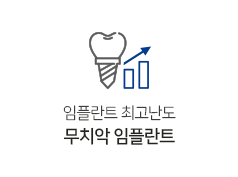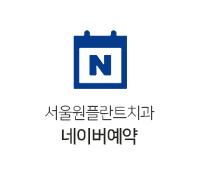Title: How to Use Data-Driven Link Building for Maximum Results in Hom…
페이지 정보
작성자 Annabelle 댓글 0건 조회 5회 작성일 24-10-21 23:07본문
- Utilize competitor analysis tools to identify potential link-building opportunities from websites linking to your competitors.
- Create data-driven content that offers valuable insights, statistics, and industry trends to attract high-quality backlinks.
- Implement a structured outreach strategy to engage with relevant websites, influencers, and industry publications for link-building partnerships.
- Optimize anchor text diversity and maintain a natural link profile to enhance the credibility and authority of your website and digital marketing in the eyes of search engines.
- Regularly audit your backlink profile to identify and disavow toxic or irrelevant links that may harm your website's SEO performance.
7. **Data-driven Optimization:** Continuously analyze and optimize homepage performance using data-driven insights and metrics. Monitor key performance indicators such as bounce rate, conversion rate, average session duration, and click-through rate to identify areas for improvement and implement A/B testing to test different strategies and determine the most effective ones.
Understanding the Basics of PPC Marketing:
PPC advertising is a form of online marketing where advertisers pay a fee each time their ad is clicked. It is a cost-effective way to drive traffic to your website and generate leads. With PPC, ads are displayed on search engine results pages (such as Google) or on social media platforms (such as Facebook) based on relevant keywords and targeting criteria.
In conclusion, Pay Per Click (PPC) marketing presents a valuable opportunity for businesses providing Homepage Services to drive targeted traffic, generate leads, and increase conversions. By following best practices, implementing effective strategies, and continuously optimizing campaigns, businesses can maximize the impact of their PPC efforts and achieve tangible results in the competitive digital landscape.
6. **Omni-channel Marketing Integration:** Create a cohesive omni-channel marketing strategy that integrates the homepage with other marketing channels such as social media, email marketing, and retargeting campaigns. Ensure consistent messaging and branding across all touchpoints to provide a seamless and unified shopping experience for customers.
1. **Personalization and Customer Segmentation:** Implementing personalized content and product recommendations based on customer preferences and browsing behavior can significantly enhance the user experience. Utilize data analytics tools to segment customers effectively and deliver tailored homepage content that resonates with their interests and needs.
Step 1: Conduct Local Keyword Research
The foundation of any successful Local SEO strategy is identifying relevant local keywords that potential customers are using to search for products or services. Utilize keyword research tools such as Google Keyword Planner, Moz, or SEMrush to discover high-intent, location-specific keywords that align with your business offerings.
Step 3: Build Local Citations and Listings
Consistent NAP (Name, Address, Phone Number) information across online directories, review sites, and social platforms is essential for Local SEO. Verify and update your business information on relevant citation sources like Yelp, Yellow Pages, and Facebook to establish trust and credibility with search engines.
Actionable Insights for Homepage Services:
1. Utilize ad scheduling to target your ads during peak times when your target audience is most active.
2. Implement ad retargeting strategies to re-engage with users who have shown interest in your services but haven't converted yet.
3. Experiment with different ad formats, such as video ads or display ads, to diversify your PPC campaigns and capture new audiences.
4. Test different bidding strategies, such as manual bidding or automated bidding, to find the most cost-effective approach for your campaigns.
5. Stay updated with industry trends and algorithm changes to adapt your PPC strategies accordingly and stay ahead of the competition.
3. Experiment with Local PPC Campaigns: Target local audiences by incorporating location-based targeting in your PPC campaigns. Highlight your proximity to customers and tailor your messaging to their specific needs and preferences.
Best Practices for Successful PPC Campaigns:
- Set clear campaign objectives and define key performance indicators (KPIs) to measure success.
- Use ad extensions to provide additional information about your Homepage Services, such as location, phone number, or promotions.
- Implement conversion tracking to measure the effectiveness of your campaigns and identify areas for improvement.
- Monitor and adjust your budget allocation based on the performance of individual campaigns and keywords.
- Leverage remarketing campaigns to re-engage with users who have previously visited your website but did not convert.
Introduction:
In the fast-paced digital landscape, link building remains a crucial aspect of search engine optimization (SEO) and plays a significant role in improving visibility, credibility, and ranking in search engine results. When it comes to Homepage Services, a data-driven approach to link building can yield maximum results by targeting the right audience, fostering relationships with relevant websites, and driving organic traffic. In this article, we will delve into the best practices and strategies for implementing data-driven link building in the context of Homepage Services.
- Create data-driven content that offers valuable insights, statistics, and industry trends to attract high-quality backlinks.
- Implement a structured outreach strategy to engage with relevant websites, influencers, and industry publications for link-building partnerships.
- Optimize anchor text diversity and maintain a natural link profile to enhance the credibility and authority of your website and digital marketing in the eyes of search engines.
- Regularly audit your backlink profile to identify and disavow toxic or irrelevant links that may harm your website's SEO performance.
7. **Data-driven Optimization:** Continuously analyze and optimize homepage performance using data-driven insights and metrics. Monitor key performance indicators such as bounce rate, conversion rate, average session duration, and click-through rate to identify areas for improvement and implement A/B testing to test different strategies and determine the most effective ones.
Understanding the Basics of PPC Marketing:
PPC advertising is a form of online marketing where advertisers pay a fee each time their ad is clicked. It is a cost-effective way to drive traffic to your website and generate leads. With PPC, ads are displayed on search engine results pages (such as Google) or on social media platforms (such as Facebook) based on relevant keywords and targeting criteria.
In conclusion, Pay Per Click (PPC) marketing presents a valuable opportunity for businesses providing Homepage Services to drive targeted traffic, generate leads, and increase conversions. By following best practices, implementing effective strategies, and continuously optimizing campaigns, businesses can maximize the impact of their PPC efforts and achieve tangible results in the competitive digital landscape.
6. **Omni-channel Marketing Integration:** Create a cohesive omni-channel marketing strategy that integrates the homepage with other marketing channels such as social media, email marketing, and retargeting campaigns. Ensure consistent messaging and branding across all touchpoints to provide a seamless and unified shopping experience for customers.
1. **Personalization and Customer Segmentation:** Implementing personalized content and product recommendations based on customer preferences and browsing behavior can significantly enhance the user experience. Utilize data analytics tools to segment customers effectively and deliver tailored homepage content that resonates with their interests and needs.
Step 1: Conduct Local Keyword Research
The foundation of any successful Local SEO strategy is identifying relevant local keywords that potential customers are using to search for products or services. Utilize keyword research tools such as Google Keyword Planner, Moz, or SEMrush to discover high-intent, location-specific keywords that align with your business offerings.
Step 3: Build Local Citations and Listings
Consistent NAP (Name, Address, Phone Number) information across online directories, review sites, and social platforms is essential for Local SEO. Verify and update your business information on relevant citation sources like Yelp, Yellow Pages, and Facebook to establish trust and credibility with search engines.
Actionable Insights for Homepage Services:
1. Utilize ad scheduling to target your ads during peak times when your target audience is most active.
2. Implement ad retargeting strategies to re-engage with users who have shown interest in your services but haven't converted yet.
3. Experiment with different ad formats, such as video ads or display ads, to diversify your PPC campaigns and capture new audiences.
4. Test different bidding strategies, such as manual bidding or automated bidding, to find the most cost-effective approach for your campaigns.
5. Stay updated with industry trends and algorithm changes to adapt your PPC strategies accordingly and stay ahead of the competition.
3. Experiment with Local PPC Campaigns: Target local audiences by incorporating location-based targeting in your PPC campaigns. Highlight your proximity to customers and tailor your messaging to their specific needs and preferences.
Best Practices for Successful PPC Campaigns:
- Set clear campaign objectives and define key performance indicators (KPIs) to measure success.
- Use ad extensions to provide additional information about your Homepage Services, such as location, phone number, or promotions.
- Implement conversion tracking to measure the effectiveness of your campaigns and identify areas for improvement.
- Monitor and adjust your budget allocation based on the performance of individual campaigns and keywords.
- Leverage remarketing campaigns to re-engage with users who have previously visited your website but did not convert.
Introduction:
In the fast-paced digital landscape, link building remains a crucial aspect of search engine optimization (SEO) and plays a significant role in improving visibility, credibility, and ranking in search engine results. When it comes to Homepage Services, a data-driven approach to link building can yield maximum results by targeting the right audience, fostering relationships with relevant websites, and driving organic traffic. In this article, we will delve into the best practices and strategies for implementing data-driven link building in the context of Homepage Services.
- 이전글7 Easy Tips For Totally Rolling With Your Pragmatic Game 24.10.21
- 다음글Sports Betting Websites For Baseball 24.10.21
댓글목록
등록된 댓글이 없습니다.























































